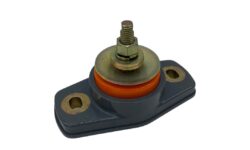Decoding DJ Jargon: A Guide to Understanding Terms in the DJ Hire Industry
Embarking on the journey to hire a DJ for your event can be an exciting yet somewhat perplexing experience, especially if you’re not familiar with the terminology commonly used in the DJ industry. From BPM and mixing to scratching and crossfading, the world of DJing comes with its own set of jargon. In this guide, we’ll decode the essential DJ terms to help you make informed decisions when hiring a DJ for your special occasion.
BPM (Beats Per Minute):
BPM is a fundamental term in the DJ world, representing the tempo or speed of a piece of music. DJs use BPM to match the beats of different songs, creating smooth transitions and a seamless flow of music throughout an event.
Mixing:
Mixing is the art of blending two or more tracks together to create a continuous and harmonious flow of music. A skilled DJ uses mixing techniques to transition from one song to the next without any abrupt pauses or disruptions.
Scratching:
Scratching involves manipulating a vinyl record on a turntable to produce distinctive sound effects. While scratching originated in hip-hop, it has become a versatile technique used across various music genres to add flair and creativity to a DJ’s performance.
Crossfading:
Crossfading is the smooth transition between two audio sources, typically achieved by gradually decreasing the volume of one track while simultaneously increasing the volume of another. This technique is essential for maintaining a constant energy level on the dance floor.
Turntablism:
Turntablism is the art of using turntables and a mixer as musical instruments. Turntablists use various techniques, including scratching, beat juggling, and sampling, to create innovative and unique sounds during their performances.
Drop:
The “drop” is a climactic point in a song where the bass and energy intensify, often leading to a memorable and impactful moment on the dance floor. DJs strategically time drops to maximize the impact on the audience.
Controller:
In modern DJ setups, a controller is a device that interfaces with DJ software, allowing the DJ to manipulate and control the music. It typically includes jog wheels, faders, buttons, and knobs for hands-on control of the mixing process.
Serato and Traktor:
Serato and Traktor are popular DJ software platforms used by DJs to control and manipulate digital music files. Understanding which software a DJ prefers can help you choose one that aligns with your preferences and requirements.
Cue Point:
DJs set cue points in a track to mark specific locations, such as the start of a beat or a significant change in the music. These points serve as reference markers, allowing DJs to quickly navigate through a song during live performances.
Conclusion:
Navigating the world of DJ hire becomes much smoother when armed with a basic understanding of the terminology commonly used in the industry. Whether you’re discussing your musical preferences with a potential DJ or attending an event, this guide will empower you to engage more confidently in conversations about BPM, mixing techniques, and other crucial aspects of the DJing craft. As you embark on your journey to find the perfect DJ for your event, let this guide serve as your key to decoding the fascinating language of the DJ hire industry.
Here you can find our original post:https://mobilediscosouthwest.blogspot.com/2023/12/decoding-dj-jargon-guide-to.html



